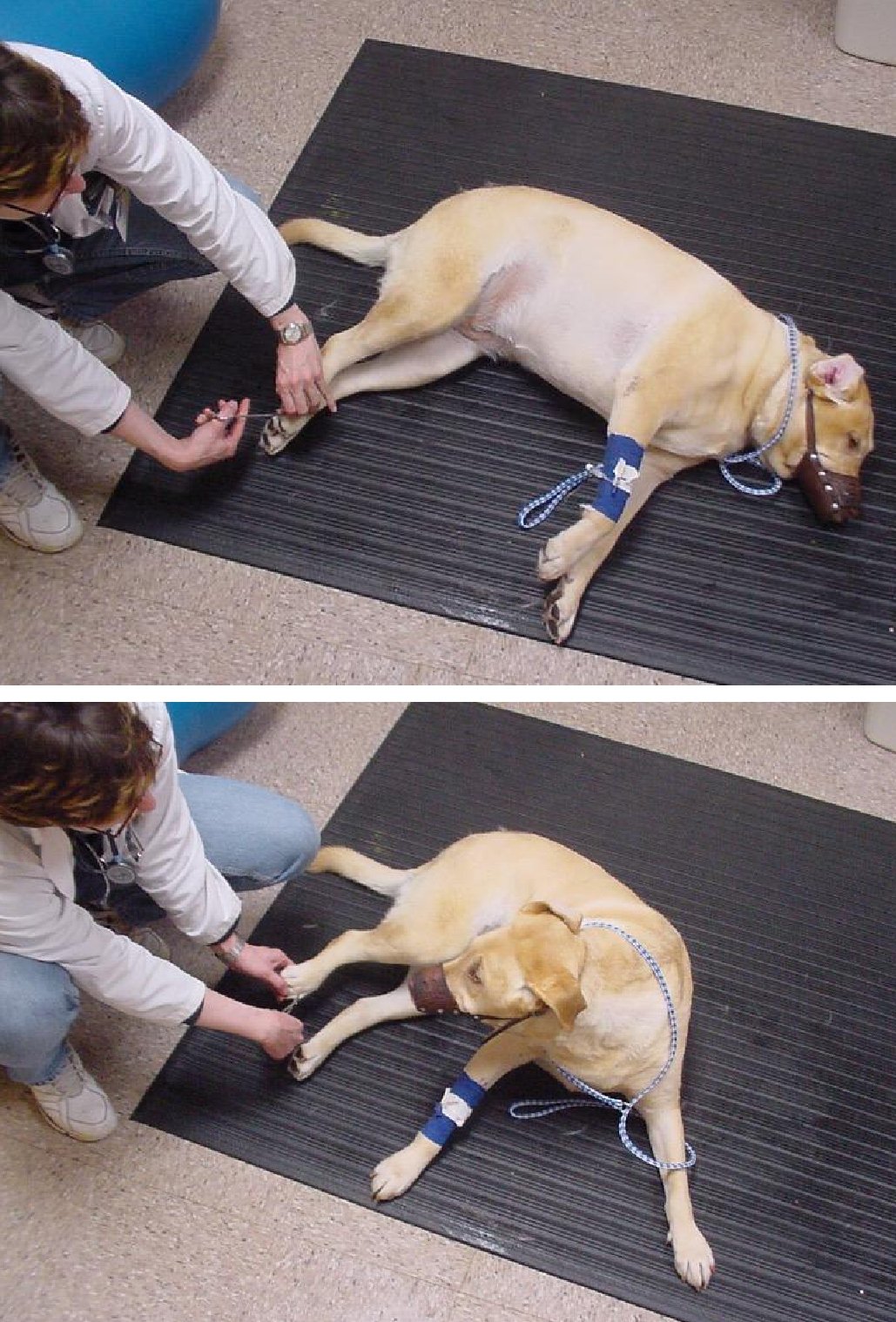What's the prognosis with back dogs?
The chart below can help provide you with a good start for dogs presenting to you with the presumptive diagnosis of IVDD. Depending on the presentation and the progression of your patient’s signs, some dogs can do well with medical treatment while others will have a better outcome with surgery.
For our discussion, we can classify 6 different presentations of paralyzed dogs with compressive spinal cord disease, Stage 1-6. Based on just our examination, we can classify how severely compressed the spinal cord is and prognosticate recovery based on severity of sign.
Stage 1 dogs are painful. Some of our patients will be agitated, aggressive, or more vocal. They commonly react to palpation of the back. Many will walk with an arched back and tight abdominal muscle - sometimes they are confused with GI symptoms. Some animals will lay quietly refusing to walk, whereas others will walk constantly or pace. Some animals will have spinal pain as their only clinical sign. These patients will often respond great to medical management. We typically do not take these dogs to surgery unless they have had multiple recurrent episodes of back pain with no paresis.
Stage 2 patients can be painful but they have trouble walking (ataxia and incoordination). They sway and trip over their own back paws. They can have trouble climbing stairs, getting on furniture, getting into the car, and will scuff their claws. Some will spontaneously knuckle. Dogs can walk at least 10 steps without falling down. Many dogs that have ambulatory paraparesis will recover as well with medical management. It is important to know that the vast majority of these dogs will recover most of their neurological function within 5 days. If your patient is still ataxic, weak, or painful, the best option for them is to be worked up to confirm the diagnosis.
Stage 3 patients have motor in their back legs but cannot walk 10 steps without falling down. They are classified as non-ambulatory paraparetic. They can tail walk or walk with a sling and can even stand up when placed in a standing position. They can often walk a few steps but consistently fall down when they walk more than a few steps. Most of these patients will have trouble emptying their bladders completely. Some will exhibit back pain. Stage 3 patients have a slightly better and more durable outcome if they have surgery rather than medical treatment. Stage 3 dogs treated medically should be significantly improved within 3-5 days; dogs that fail to improve still have an excellent chance of having a good outcome with surgery.
Stage 4-6 patients are all paralyzed - they cannot stand, they cannot move their limbs purposefully, and cannot urinate (they often have overflow incontinence so this can be confusing). Stage 4 patients can still feel the toes of their pelvic limbs. Remember dogs cannot “tell you” when you tickle or pinch their toes. You must look for obvious signs of pain registered by your patient. It is often expressed by crying out, moving away from you, turning to bit you, or other cerebrocortical response. Don’t get fooled by the animals that reflexively retract their limbs without a conscious response that it hurts. Stage 4 patients should be seen as soon as possible for diagnosis and surgery. These patients have an excellent prognosis for full return of neurological function.
Stage 5 and 6 patients are paralyzed and do not have pain sensation. So they do not respond even when there is a severe, crushing stimuli on a toe. Remember, the withdrawal reflex is not pain perception. An animal that has lost deep pain perception has a guarded prognosis and for the best possible outcome should be considered an emergency surgical candidate and treated surgically within 24-48 hours. Stage 5 dogs still have a good chance of return of neurological function.
Stage 6 dogs still have a chance for recovery but prognosis is guarded - in my clinical experience, I have had several dogs that had been paralyzed for over a week that were reported deep pain negative for that time. After diagnosis and surgery, they made remarkable recoveries; so I hate to say that a paralyzed, deep pain negative patient does not have any chance of recovery.
In summary, any dogs that are grades 3-6 are surgical candidates. They would need spinal imaging for diagnosing the specific disk rupture and state of the spinal cord.
Next: Diagnosing and managing dogs with IVDD
Perception of deep pain -
Top panel: Sam is relatively relaxed, laying down. He cannot support himself and drags his rear legs with his front legs. He will leak urine in his bed but his bladder is very big. When you tickle his paws or tail, he is not aware of the examiner.
Bottom panel: He does not respond to any stimulation until our nurse uses a big hemostats and pinches his toe. Only then does he roll up, whines, and try to stop her from pinching any further by trying to bite.


